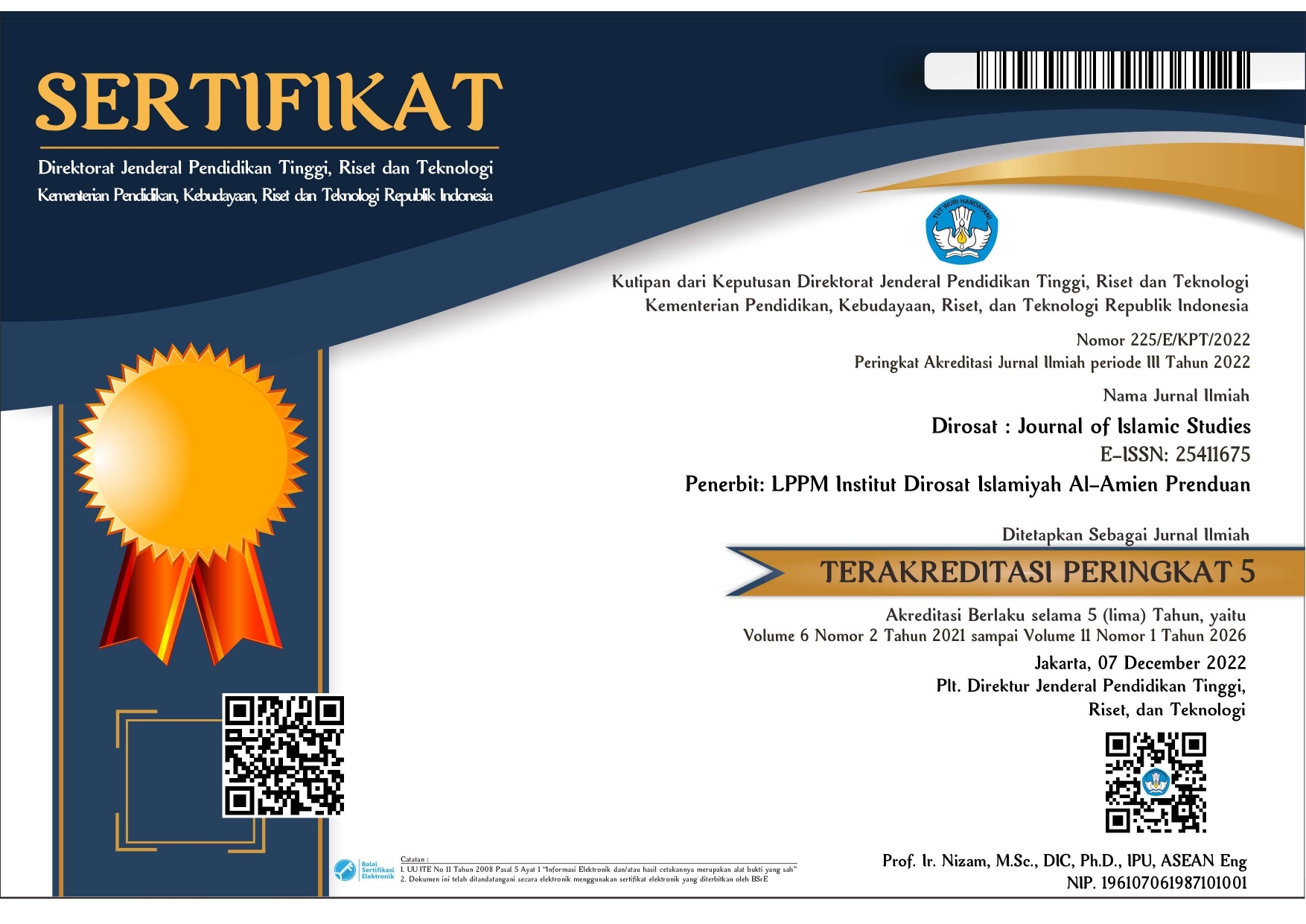THE CORRELATION OF DIGITAL LITERACY COMPETENCE AND LEARNING MOTIVATION WITH SOCIAL ATTITUDES AND SELF-EFFICACY IN INDONESIAN TEACHER CANDIDATES FOLLOWING THE COVID-19 PANDEMIC
Abstract
This study is critical because it looks at digital literacy in Indonesian education, especially post the challenges of the COVID-19 pandemic which forced schools to use more technology. It also examines motivation, social attitudes, and self-confidence, which are all important parts of digital literacy. The main goal is to find out how digital literacy skills and the motivation to learn affect the attitudes and self-confidence of future teachers in Indonesia after the pandemic. To do this, the study surveyed prospective elementary school teachers across Indonesia, with 331 participants from various islands like Java, Kalimantan, Maluku, Nusa Tenggara and Bali, Papua, and Sumatra. An online questionnaire was used to collect data, and the analysis included descriptive statistics, Pearson correlation, and linear regression. The results showed that digital literacy has a 43% impact on social attitudes and a 33% impact on self-confidence. Motivation affects social attitudes by 57% and self-confidence by 42%. This suggests that being good at digital literacy doesn't automatically mean someone will have positive social attitudes online. Therefore, the study highlights the importance of having skills in independent learning, creativity, and using technology effectively to develop positive attitudes in digital spaces.
Keywords
References
Anthonysamy, L., Koo, A. C., & Hew, S. H. (2020). Self-regulated learning strategies in higher education: Fostering digital literacy for sustainable lifelong learning. Education and Information Technologies, 25(4), 2393–2414. https://doi.org/10.1007/s10639-020-10201-8
Anwar, K., Widyanti, R., Adawiah, R., & Triyuliadi, U. (2021). The Effect of Work Motivation and Commitment on Teacher Performance | International Journal of Science and Society. International Journal of Science and Society (IJSOC), 3(4), 106–118.
Aslan, S. (2021). Analysis of Digital Literacy Self-Efficacy Levels of Pre-Service Teachers. International Journal of Technology in Education, 4(1), 57–67.
Azhari, B., & Fajri, I. (2022). Distance learning during the COVID-19 pandemic: School closure in Indonesia. International Journal of Mathematical Education in Science and Technology, 53(7), 1934–1954. https://doi.org/10.1080/0020739X.2021.1875072
Bas, G. (2022). Effect of student teachers’ teaching beliefs and attitudes towards teaching on motivation to teach: Mediating role of self-efficacy. Journal of Education for Teaching, 48(3), 348–363. https://doi.org/10.1080/02607476.2021.2006043
Basilotta-Gómez-Pablos, V., Matarranz, M., Casado-Aranda, L.-A., & Otto, A. (2022). Teachers’ digital competencies in higher education: A systematic literature review. International Journal of Educational Technology in Higher Education, 19(1), 8. https://doi.org/10.1186/s41239-021-00312-8
Bernard, R. M., Abrami, P. C., Lou, Y., Borokhovski, E., Wade, A., Wozney, L., Wallet, P. A., Fiset, M., & Huang, B. (2004). How Does Distance Education Compare With Classroom Instruction? A Meta-Analysis of the Empirical Literature. Review of Educational Research, 74(3), 379–439. https://doi.org/10.3102/00346543074003379
Bjelajac, Ž., & Filipovi?, A. (2021). Specific characteristics of digital violence and digital crime. Pravo - Teorija i Praksa, 38(4), 16–32. https://doi.org/10.5937/ptp2104016B
Borthwick, A. C., & Hansen, R. (2017). Digital Literacy in Teacher Education: Are Teacher Educators Competent? Journal of Digital Learning in Teacher Education, 33(2), 46–48. https://doi.org/10.1080/21532974.2017.1291249
Cabero-Almenara, J., Barroso-Osuna, J., & Palacios-Rodríguez, A. (2021). Estudio de la competencia digital docente en Ciencias de la Salud. Su relación con algunas variables. Educación Médica, 22(2), 94–98. https://doi.org/10.1016/j.edumed.2020.11.014
Castellví, J., Díez-Bedmar, M.-C., & Santisteban, A. (2020). Pre-Service Teachers’ Critical Digital Literacy Skills and Attitudes to Address Social Problems. Social Sciences, 9(8), Article 8. https://doi.org/10.3390/socsci9080134
Çeti?n, M., & ??çi?, T. G. (2022). Relationship between Social Studies Teacher Candidates’ Digital Literacy Self-Efficacy Levels and Information and Communication Technology Competencies. International Journal of Education and Literacy Studies, 10(2), 71–80. https://doi.org/10.7575/aiac.ijels.v.10n.2p.71
Cleophas, T. J., & Zwinderman, A. H. (2018). Bayesian Pearson Correlation Analysis. In T. J. Cleophas & A. H. Zwinderman (Eds.), Modern Bayesian Statistics in Clinical Research (pp. 111–118). Springer International Publishing. https://doi.org/10.1007/978-3-319-92747-3_11
Cosby, A., Fogarty, E. S., & Manning, J. (2023). Digital Literacy and Digital Self-Efficacy of Australian Technology Teachers. Education Sciences, 13(5), Article 5. https://doi.org/10.3390/educsci13050530
George, D., & Mallery, P. (2018). Descriptive Statistics. In IBM SPSS Statistics 25 Step by Step (15th ed.). Routledge.
Ginsberg, M. B., & Wlodkowski, R. J. (2019). Intrinsic Motivation as the Foundation for Culturally Responsive Social-Emotional and Academic Learning in Teacher Education. Teacher Education Quarterly, 46(4), 53–66.
Gobena, G. A. (2018). Factors Affecting In-Service Teachers’ Motivation: Its Implication to Quality of Education. International Journal of Instruction, 11(3), 163–178.
Hobbs, R., & Coiro, J. (2019). Design Features of a Professional Development Program in Digital Literacy. Journal of Adolescent & Adult Literacy, 62(4), 401–409. https://doi.org/10.1002/jaal.907
Kamenetz, A. (2020, March 19). “Panic-gogy”: Teaching Online Classes During The Coronavirus Pandemic. NPR. https://www.npr.org/2020/03/19/817885991/panic-gogy-teaching-online-classes-during-the-coronavirus-pandemic
Karagözo?lu, N., & Gezer, U. (2022). An Investigation of the Relationship Between Digital Literacy Levels of Social Studies Teacher Candidates and Their Attitudes Towards Distance Education. Educational Policy Analysis and Strategic Research, 17(1), 218–235. https://doi.org/10.29329/epasr.2022.248.11
Kumari, K., & Yadav, S. (2018). Linear Regression Analysis Study. Journal of the Practice of Cardiovascular Sciences, 4(1), 33. https://doi.org/10.4103/jpcs.jpcs_8_18
Kuo, Y.-C., & Belland, B. R. (2019). Exploring the relationship between African American adult learners’ computer, Internet, and academic self-efficacy, and attitude variables in technology-supported environments. Journal of Computing in Higher Education, 31(3), 626–642. https://doi.org/10.1007/s12528-019-09212-3
Lie, A., Mina Tamah, S., Gozali, I., Retno Triwidayati, K., Sari Diah Utami, T., & Jemadi, F. (2020). Secondary School Language Teachers’ Online Learning Engagement during the Covid-19 Pandemic in Indonesia. Journal of Information Technology Education: Research, 19, 803–832. https://doi.org/10.28945/4626
Liu, Y., Zhao, L., & Su, Y.-S. (2022). The Impact of Teacher Competence in Online Teaching on Perceived Online Learning Outcomes during the COVID-19 Outbreak: A Moderated-Mediation Model of Teacher Resilience and Age. International Journal of Environmental Research and Public Health, 19(10), 6282. https://doi.org/10.3390/ijerph19106282
Martinovic, D., Freiman, V., Lekule, C. S., & Yang, Y. (2019). The Roles of Digital Literacy in Social Life of Youth. In Advanced Methodologies and Technologies in Library Science, Information Management, and Scholarly Inquiry (pp. 103–117). IGI Global. https://doi.org/10.4018/978-1-5225-7659-4.ch009
Muflihan, Y., Prasetyaningtyas, W., Fajri, N., & Sari, N. (2024). Meta-Analysis Study: The Influence of Motivation on Teacher Performance in Indonesia. Formosa Journal of Science and Technology, 3(2), Article 2. https://doi.org/10.55927/fjst.v3i2.8143
Nasullah, R. (2017). Materi Pendukung Literasi Digital; Gerakan Literasi Nasional. Kementrian Pendidikan dan Kebudayaan.
Olur, B., & Ocak, G. (2021). Digital Literacy Self-Efficacy Scale: A Scale Development Study. African Educational Research Journal, 9(2), 581–590.
Paat, Y.-F., & Markham, C. (2021). Digital crime, trauma, and abuse: Internet safety and cyber risks for adolescents and emerging adults in the 21st century. Social Work in Mental Health, 19(1), 18–40. https://doi.org/10.1080/15332985.2020.1845281
Prior, D. D., Mazanov, J., Meacheam, D., Heaslip, G., & Hanson, J. (2016). Attitude, digital literacy and self efficacy: Flow-on effects for online learning behavior. The Internet and Higher Education, 29, 91–97. https://doi.org/10.1016/j.iheduc.2016.01.001
Reddy, E., Reddy, P., Sharma, B., Reddy, K., & Khan, M. G. M. (2016). Student Readiness and Perception to the Use of Smart Phones for Higher Education in the Pacific. 2016 3rd Asia-Pacific World Congress on Computer Science and Engineering (APWC on CSE), 258–264. https://doi.org/10.1109/APWC-on-CSE.2016.049
Reddy, P., Sharma, B., & Chaudhary, K. (2020). Digital Literacy: A Review of Literature. International Journal of Technoethics, 11(2), 65–94. https://doi.org/10.4018/IJT.20200701.oa1
Reddy, P., Sharma, B., & Chaudhary, K. (2022). Digital literacy: A review in the South Pacific. Journal of Computing in Higher Education, 34(1), 83–108. https://doi.org/10.1007/s12528-021-09280-4
Rodriguez, M., & Liu, L. (2023). A Case Study of the Caregiver Digital Literacy Self-Efficacy During Distance Learning. Journal of School Administration Research and Development, 8(2), Article 2. https://doi.org/10.32674/jsard.v8i2.5815
Rusydiyah, E. F., Purwati, E., & Prabowo, A. (2020). How to Use Digital Literacy as A Learning Resource for Teacher Candidates in Indonesia. Jurnal Cakrawala Pendidikan, 39(2), 305–318. https://doi.org/10.21831/cp.v39i2.30551
Samani, E., Bagheripour, R., & Noordin, N. (2020). Effect of a Course on Educational Tools on Students’ Attitude and Digital Literacy Skills. International Journal of Educational Technology and Learning, 8, 38–46. https://doi.org/10.20448/2003.81.38.46
Schunk, D. H., & DiBenedetto, M. K. (2021). Chapter Four—Self-efficacy and human motivation. In A. J. Elliot (Ed.), Advances in Motivation Science (Vol. 8, pp. 153–179). Elsevier. https://doi.org/10.1016/bs.adms.2020.10.001
Seçki?n-Kapucu, M., Özcan, H., & Karakaya-Özyer, K. (2021). The Relationship Between Middle School Students’ Digital Literacy Levels, Social Med?a Usage Purposes and Cyberbullying Threat Level. International Journal of Modern Education Studies, 5(2), Article 2.
Sharma, B., Jokhan, A., Kumar, R., Finiasi, R., Chand, S., & Rao, V. (2015). Use of Short Message Service for Learning and Student Support in the Pacific Region. In Y. Zhang (Ed.), Handbook of Mobile Teaching and Learning (pp. 1–18). Springer Berlin Heidelberg. https://doi.org/10.1007/978-3-642-41981-2_9-1
Shen, D., Cho, M.-H., Tsai, C.-L., & Marra, R. (2013). Unpacking online learning experiences: Online learning self-efficacy and learning satisfaction. The Internet and Higher Education, 19, 10–17. https://doi.org/10.1016/j.iheduc.2013.04.001
Soepriyanti, H., Waluyo, U., Sujana, M., & Fitriana, E. (2022). An Exploratory Study of Indonesian Teachers’ Digital Literacy Competences. Technium Social Sciences Journal, 28, 116.
Sulasmi, E. (2022). Primary School Teachers’ Digital Literacy: An Analysis On Teachers’ Skills In Using Technological Devices. Journal of Innovation in Educational and Cultural Research, 3(2), Article 2. https://doi.org/10.46843/jiecr.v3i2.81
Sun, L., Tang, Y., & Zuo, W. (2020). Coronavirus pushes education online. Nature Materials, 19(6), Article 6. https://doi.org/10.1038/s41563-020-0678-8
Sung, E., & Mayer, R. E. (2012). Five facets of social presence in online distance education. Computers in Human Behavior, 28(5), 1738–1747. https://doi.org/10.1016/j.chb.2012.04.014
Taryana, T., Riniati, W. O., Haddar, G. A., Sembiring, D., & Mutmainnah, M. (2023). The Influence of Teacher Certification and Teaching Motivation on Teacher Performance. Journal on Education, 5(3), Article 3. https://doi.org/10.31004/joe.v5i3.1455
UNICEF. (2020, August 24). ‘What will a return to school during COVID-19 look like?’ UNICEF for Every Child. https://www.unicef.org/coronavirus/what-will-return-school-during-covid-19-pandemic-look
Utomo, M. N. Y., Sudayanto, M., & Saddhono, K. (2021). Tools and Strategy for Distance Learning to Respond COVID-19 Pandemic in Indonesia (SSRN Scholarly Paper No. 3795853). https://papers.ssrn.com/abstract=3795853
Van der Bijl, J., & Shortridge-Baggett, L. (2001). The theory and measurement of the self-efficacy construct. Scholarly Inquiry for Nursing Practice, 15, 189–207.
Voica, C., Singer, F. M., & Stan, E. (2020). How are motivation and self-efficacy interacting in problem-solving and problem-posing? Educational Studies in Mathematics, 105(3), 487–517. https://doi.org/10.1007/s10649-020-10005-0
Vosoughi, S., Roy, D., & Aral, S. (2018). The spread of true and false news online. Science, 359(6380), 1146–1151. https://doi.org/10.1126/science.aap9559
Wijaya, T. T., Zhou, Y., Purnama, A., & Hermita, N. (2020). Indonesian students learning attitude towards online learning during the coronavirus pandemic. Psychology, Evaluation, and Technology in Educational Research, 3(1), Article 1. https://doi.org/10.33292/petier.v3i1.56
Zhao, Y. (2012). Flunking Innovation and Creativity. Phi Delta Kappan, 94(1), 56–61. https://doi.org/10.1177/003172171209400111
Zhao, Y., & Watterston, J. (2021). The changes we need: Education post COVID-19. Journal of Educational Change, 22(1), 3–12. https://doi.org/10.1007/s10833-021-09417-3
DOI: 10.28944/dirosat.v10i1.2053
Refbacks
- There are currently no refbacks.

This work is licensed under a Creative Commons Attribution-NonCommercial-ShareAlike 4.0 International License.








